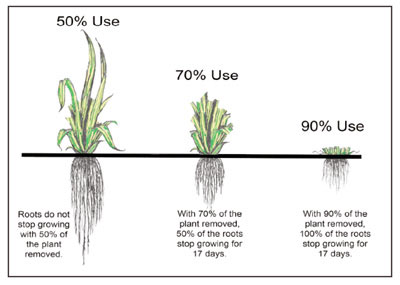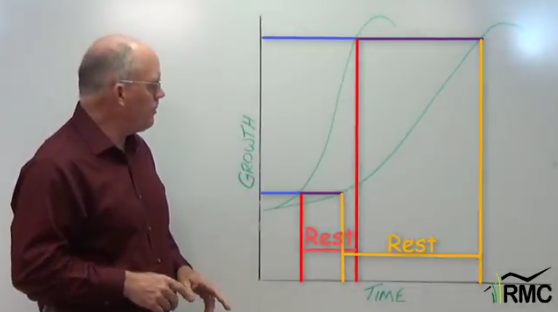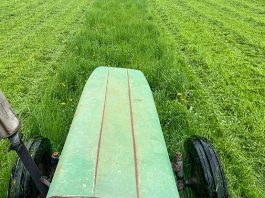If you go to enough workshops about grazing, you’re bound to see an illustration that shows how biting off the tops of plants impacts their roots, and how if you graze short enough, the plant won’t have enough roots to rebound and produce more leafy material. In fact, if you’ve been with us at On Pasture for any length of time, you’ll have seen a version of that illustration. It looks like this:
In addition to losing the ability to feed your livestock, short roots can’t hold the soil in place, let alone do their job of feeding soil microorganisms, creating a sponge to hold water, and pulling carbon from the air deep, deep into the soil where it can be sequestered. It’s that depth that makes the difference between carbon that “breathes” back and forth between the soil and the atmosphere, and carbon that is actually held long term.
So what do we mean by deep? Well, it turns out that many plants and icebergs have something in common. What you see above the surface is very small compared to what’s below. And now, thanks to Jerry Glover, who’s an agroecologist from Kansas, and Jim Richardson, a National Geographic photographer, you can get a good idea of the depths roots go to to do their jobs. You can read about the techniques they used to create these photos here, but what we’d like you to focus on is how far down into the earth you’re managing when you move your livestock across a pasture. Take a look:









Kathy excellent article, well put and good photo’s.
Can I use some of the photo’s in lectures, I will say
where they come from?
Ian
The photos are from National Geographic, so head over to their article to get the full scoop and to give credit where credit is due. Glad you enjoyed it and happy to know you’re reading On Pasture too. Thanks, Ian!
Kathy,
This is a great article. I have tried to explain this to many of those I work with who run cattle. This is straight to the point. Even the most set in their way operators can understand the relationships between the visible part of the plant and the hidden roots.
Kathy, these root’n, shoot’n pictures are awesome. They should be in many textbooks.
What a treat to get a good look at the rest of the plant! I’m assuming that the roots are not as vertical in place as they are in the photos. Root depth is limited by lower oxygen and nutrient levels, restrictive soil horizons (like compact glacial till in the north), presence of a water table below which roots would suffocate, etc. Having read that most of the biomass of grass is below ground, it’s nice to see confirmation. And looking at the forbs (compass plant and goldenrod), I’m wondering if the same isn’t true for them as well.
Comments are closed.